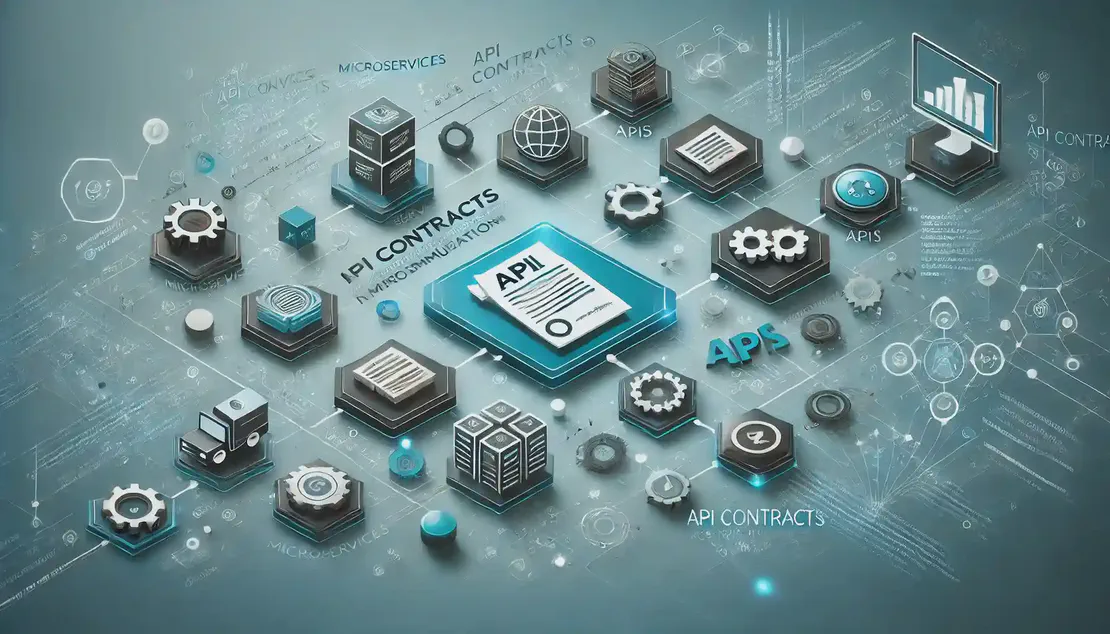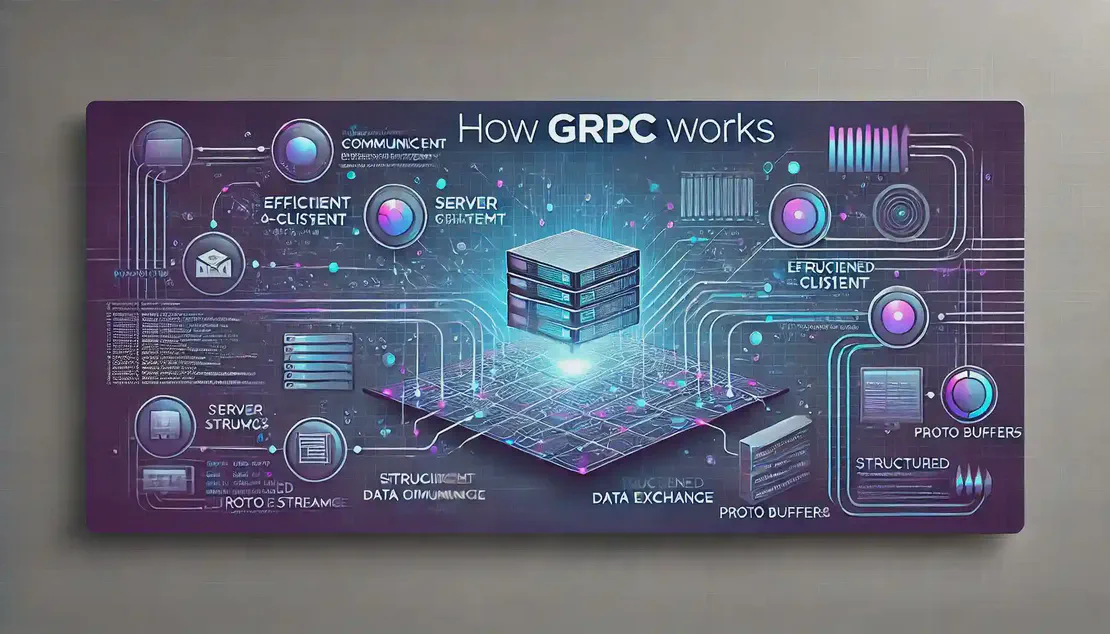Microservices
- Home /
- Categories /
- Microservices

API Contracts in Microservices Communication
🔗 Role in Microservices — API contracts define the expected interactions between microservices, ensuring that each service communicates correctly with others. This is crucial in a microservices architecture where services are independently developed and deployed.
Read More
Cloud-Native Applications Explained
☁️ Definition — Cloud-native applications are designed to fully leverage cloud computing environments, utilizing microservices architecture to enhance scalability, flexibility, and resilience.
Read More
Types of Load Balancing Algorithms
🔄 Load Balancing Algorithm — A load balancing algorithm is a set of predefined rules used by a load balancer to distribute network traffic between servers, ensuring no single server becomes overloaded.
Read More
How gRPC Works
🔧 Architecture — gRPC is a high-performance, open-source RPC framework that uses HTTP/2 for transport and Protocol Buffers for message serialization. It allows client applications to call methods on a server application as if they were local objects.
Read More
Docker Architecture Explained
🖥️ Client-Server Model — Docker uses a client-server architecture where the Docker client communicates with the Docker daemon to manage containers.
Read More
Kubernetes Architecture Explained
🔧 Control Plane — The control plane manages the overall state of the Kubernetes cluster. It includes components like kube-apiserver, etcd, kube-scheduler, and kube-controller-manager, which handle tasks such as API management, data storage, scheduling, and running controller processes.
Read More
Timeout Pattern in Microservices
⏳ Timeout Pattern — The timeout pattern in microservices is a design strategy used to handle delays and failures in service communication by setting a maximum wait time for responses.
Read More
Service Discovery in Microservices
🔍 Definition — Service discovery is a mechanism that allows microservices to locate and communicate with each other within a distributed system. It is essential for managing the dynamic nature of microservices environments.
Read More
Chaos Engineering in Microservices
🔍 Definition — Chaos Engineering is a discipline that involves experimenting on a software system in production to build confidence in the system’s capability to withstand turbulent conditions.
Read More
Main API Architecture Styles
🔄 REST — REST (Representational State Transfer) is a stateless architectural style that uses standard HTTP methods like GET, POST, PUT, and DELETE. It is simple, scalable, and flexible, supporting various data formats such as JSON and XML. However, it lacks a clear contract and has limited support for complex queries.
Read More
Best Practices for Managing Secrets in Microservices
🔐 Centralized Management — Use centralized secret management systems like HashiCorp Vault or AWS Secrets Manager to securely store and manage secrets. This helps in maintaining a single source of truth and simplifies access control.
Read More
Distributed Tracing in Microservices Explained
🔍 Definition — Distributed tracing is a method used to track and observe application requests as they move through distributed systems or microservice environments.
Read More
Service Mesh: Managing Microservices Communication
🔍 Definition — A service mesh is an infrastructure layer that manages communication between microservices in a distributed system, providing tools for traffic management, security, and observability.
Read More
Sidecar Pattern in Microservices
🔄 Definition — Event sourcing is a pattern where the state of a business entity is stored as a sequence of events, rather than just the current state.
Read More
Event Sourcing in Microservices
🔄 Definition — Event sourcing is a pattern where the state of a business entity is stored as a sequence of events, rather than just the current state.
Read More
Understanding Two-Phase Commit in Microservices
🔄 Protocol Overview — The Two-Phase Commit (2PC) protocol is a distributed algorithm used to ensure that a transaction is either committed or aborted across all participating nodes in a distributed system.
Read More
Understanding the CQRS Pattern
🔄 Definition — CQRS stands for Command Query Responsibility Segregation, a pattern that separates the responsibilities of handling commands (write operations) and queries (read operations) in a software system.
Read More
Understanding the Saga Pattern in Microservices
🔄 Definition — The Saga pattern is a design pattern used to manage distributed transactions in microservices by breaking them into a series of smaller, local transactions.
Read More
Managing Transactions in Microservices
🔄 Distributed Transactions — Managing transactions in microservices often involves distributed transactions, which can be complex due to the need to maintain consistency across multiple services.
Read More
Implementing the Retry Pattern in Microservices
🔄 Definition — The Retry Pattern is a design strategy used in microservices to handle transient failures by automatically retrying failed requests.
Read More
Implementing JWT for Secure API Communication
🔐 API Security Importance — API security is crucial due to the increasing number of APIs and their exposure as attack vectors. APIs are often publicly exposed, making them attractive targets for cyberattacks.
Read More
Role of API Gateways in Microservices Architecture
🔗 Centralized Entry Point — API gateways serve as a centralized entry point for all client requests in a microservices architecture, managing and routing these requests to the appropriate microservice.
Read More
Understanding Zero Downtime Deployments
🔄 Definition — Zero downtime deployment (ZDD) is a method of updating software without causing any service interruptions or downtime for users.
Read More
Understanding Idempotency in APIs
🔄 Definition — Idempotency in APIs refers to the property where performing the same operation multiple times results in the same outcome as performing it once.
Read More
Understanding API Rate Limiting
🔍 Definition — API rate limiting is a technique used to control the number of requests a user or application can make to an API within a specific timeframe. It ensures that APIs handle traffic efficiently without being overwhelmed.
Read More
Choosing Between Microservices and Monolithic Architecture
🔍 Definition — Monolithic architecture is a traditional software model where the entire application is built as a single, indivisible unit. Microservices architecture, on the other hand, breaks down the application into smaller, independent services that can be developed, deployed, and scaled independently.
Read More
Understanding the Circuit Breaker Pattern
🔌 Definition — The Circuit Breaker Pattern is a design pattern used in software development to prevent an application from repeatedly trying to execute an operation that is likely to fail.
Read More